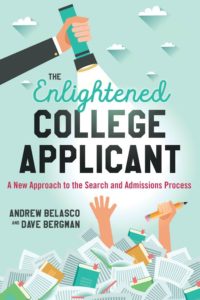Making the most of your Early Decision “card”
June 23, 2016

The glamorization of the million-to-one chance is deeply engrained in the American ethos. From Rocky Balboa becoming heavyweight champ to The Golden Ticket in Charlie and the Chocolate Factory, we are taught to believe that good fortune just might happen in spite of infinitesimal odds. Every time the Powerball hits a billion dollars, half of the country begins daydreaming what they will do with their ten figure winnings, ignoring the reality that they are more likely to be killed by a vending machine (an actual statistical fact).
Each year, we witness countless students with absolutely fantastic, but not quite Harvard/Yale/Stanford numbers, use their sole Early Decision or Restrictive Early Action (REA) application on those precise institutions. Before you or your teen elects to walk down this same path, give this blog a read and consider formulating a more reality-based game plan.
The Power of ED
The Early Decision “card” is one of the most powerful strategic tools an applicant possesses. No other tactical move will increase your admissions odds more at a school that may be just a hair beyond your reach.
For examples, in the 2015-16 admissions season, Johns Hopkins and Notre Dame accepted 30% of ED applicants. Middlebury took in 53% and Northwestern said yes to 35%.
Compare this to the acceptance rates for the general applicant pool:
Johns Hopkins: 12%
Notre Dame: 18%
Middlebury: 16%
Northwestern: 11%
Academic research has demonstrated that applying ED is worth 100 points on the SAT. This makes sense—colleges, even of the elite variety, are competing with each other for top candidates. Any applicant who applies through a ED is irrevocably committing themselves to one school. For admissions officers who lose sleep over yield rates, these pledged applicants are the antidote to their insomnia.
Am I being delusional?
It is essential that every applicant reasonably assess their chances of earning admission into a Harvard/Yale/Stanford as not to waste their ED (or in this case, REA) opportunity. Too often we see students with ACTs in the 31-33 range (1440-1490 SAT equivalent) who are in the top 10% of their class wish to cast their sole REA opportunity toward one of these three schools. Those who do are, without fail, disappointed.
The average SAT score of an admitted applicant at Yale, Harvard is over 1500. At Stanford it’s right around 1480. Further, it’s important to remember that this includes special applicants such as those from disadvantaged backgrounds, athletes, or legacies who may have scores significantly below the mean.
These schools have little incentive to snatch up applicants with a 1450 SAT who sit in the top 10% of their class; they barely have to compete for students who boast perfect credentials. A quick examination of “yield rate”; that is the number of accepted applicants who enroll in the university further illuminates this point.
Harvard has the top yield rate in the country at 85%, Stanford (80%) and Yale (70%) also sit atop the statistical category. Sitting a notch below, Penn and Cornell, both ED schools, have yield rates of 65% and 53%, respectively, which are quite high relative to other elite institutions. On the other hand, Tufts and Johns Hopkins have a yield rate of 40%. Rice, NYU, and Lehigh are all in the mid-to-low 30s. Emory and GW are typically between 35-40%. These elite schools, given their lower yield rate, will be more motivated to lock down applicants within an acceptable range of their standards.
A more reasonable “reach.”
Students with credentials in the ballpark of those mentioned above should set their sights on more reasonable reach schools. Think of it as needing to stand on your tippy toes to gain admission versus scaling a 60 foot ladder.
For example The University of Pennsylvania, which admits 23% of ED applicants versus 10% from the regular admission pool. Cornell gives a thumbs up to 26% of their ED hopefuls versus 14% from the general applicants. Bowdoin’s Class of 2020 ED applicants were accepted at a 33% clip as compared to their typical rate of 15%.
The average student admitted to Cornell possesses an SAT of 1420, UPenn 1430, and Bowdoin 1450. If you are in the SAT ballpark and boast a strong GPA, class rank, etc., then institutions of this ilk have every reason to strongly consider you, the bird in the hand, versus those still in the regular decision bush.
Final Thoughts
 The Early Decision “card,” if used thoughtfully, can be a decisive strategic advantage in the game of college admissions and yet, for some reason, many students elect to use it as the application equivalent of a Mega Millions ticket.
The Early Decision “card,” if used thoughtfully, can be a decisive strategic advantage in the game of college admissions and yet, for some reason, many students elect to use it as the application equivalent of a Mega Millions ticket.
Unless you are in a special category (athlete, legacy, underrepresented minority), or your core stats are above the mean of accepted applicants, an ED application to Harvard, Yale, or Stanford is dead on arrival. The truly enlightened college applicant (shameless plug), will eschew the Powerball strategy and invest their singular early opportunity in a school that actually has a realistic chance to say “yes.”


